stem and leaf Learn more about stem and leaf
-
How to prevent and cure pineapple stem spot mildew leaf spot?
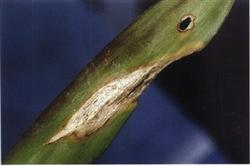
How to prevent and cure pineapple stem spot mildew leaf spot? What harm does pineapple stem spot mildew leaf spot disease have? Please introduce the harm of pineapple stem spot leaf spot: pineapple stem spot leaf spot is a common disease, which belongs to a kind of leaf spot disease, which mainly harms leaves and affects leaf photosynthesis.
2018-07-18 -
Control of Red Leaf Stem Blight of planting Cotton

Cotton red leaf stem blight is a physiological disease, and it is one of the main diseases in the middle and later stage of cotton. Over the years, the occurrence of red leaf stem blight in sandy loam and barren cotton fields in our county is relatively serious. In dry years, especially in the weather of prolonged drought, rain or continuous rain, red leaf stem blight broke out and cotton plants withered and died.
2020-11-08 Grow cotton bonus leaf stem blight disease control cotton bonus -
Beware of the outbreak of cotton red leaf stem blight after heavy rain

Recently, the cotton area is generally heavy rain, for cotton after a long drought, it is easy to break out red leaf stem blight. Red leaf stem blight is a physiological disease. It starts from the growing point of the main stem or the top of the fruit branch, and generally develops from top to bottom and from outside to inside. The main stem withers to death but the anatomical vessels are achromatic. The root system is thick and short, and the fibrous root is less poorly developed. Cotton red leaf stem blight outbreak is caused by extensive cultivation of cotton fields, poor development of cotton roots, poor drainage of cotton fields, partial application of nitrogen fertilizer, vigorous growth of cotton,
2019-01-15 -
Douban green is axe leaf pepper grass family culture methods and matters needing attention? What if the leaves fall off? What about the rotten stem?
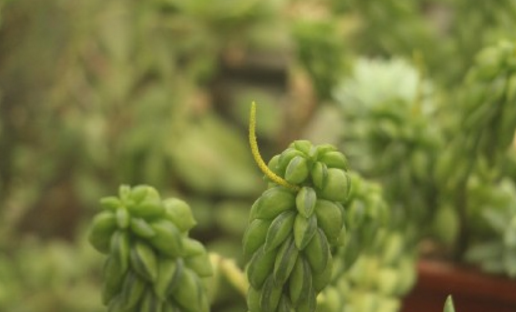
The axe leaf pepper grass is the pepper grass belongs to the pepper grass succulent plant, the spring and autumn is its growth period, then the axe leaf pepper grass family breeding method and the matters needing attention? What if the leaves fall off? What about the rotten stem? It is understood that the axe leaf pepper prairie comes from Peru and needs a sunny, cool and dry environment. It is resistant to semi-shade and is afraid of waterlogging.
2019-03-16 -
The latest culture method of tortoise back bamboo

Tortoise back bamboo is an evergreen vine, native to the Mexican tropical rain forest, tortoise back bamboo plant shape is beautiful, the leaf shape is strange, the leaf color is dark green, and full of luster, the ornamental effect of the whole plant is good. In addition, it also has a strange ability to attract carbon dioxide at night.
2020-11-10 The latest turtle back bamboo culture method for evergreen -
Identification of common confounding symptoms in rice

1. Several kinds of Ralstonia solanacearum 1. Sclerotinia sclerotiorum. It is more common in the late stage of late rice, which often occurs in clumps in the field, and there are several plants in a hole. The tissue at the base of rice is soft rotten and has dark brown spots. Peeling off the basal leaf sheath and stem, we can see that there are many black sclerotia smaller than amaranth seeds. 2. Bacterial base rot and wilt. Sporadic occurrence in the field, generally 1 in 1 point, 3 plants fell ill, the base of the diseased plant showed rat gray rot, the root system was rare and decayed, peeled off the basal stem, full of smelly water, sterile sclerotia. 3. Physiologically withered. The stem of rice plant shrinks and the base of rice stem is pinched by hand.
2019-01-16 -
Varieties and characteristics of foliage flowers in greenhouse

Foliage flowers take leaves as the main ornamental parts, including the color and shape of leaves, which mostly refer to those plants that are evergreen all the year round, beautiful leaves, unique, rarely bloom, even if they bloom, but have little ornamental value. Next, I will give you a push.
2020-11-27 Greenhouse view leaves flowers varieties and characteristics -
Why don't green-leaf orchids grow stems and leaves? more nitrogen, less potassium, less light is the key.
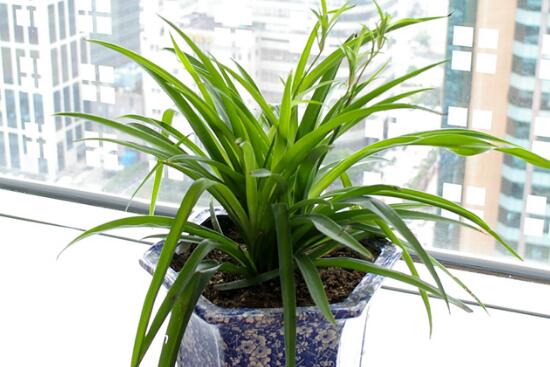
Although it is a beautiful foliage plant, we know that it is not difficult for Cymbidium to blossom under the condition of proper maintenance. However, in the process of breeding, many flower friends will encounter the situation that the green leaf orchid does not grow stems and leaves, which will eventually cause the plant not to blossom! So, why don't green leaf orchids grow stems and leaves?
2018-12-12 -
The culture method of tortoise back bamboo

The culture method of tortoise back bamboo
2018-08-17 -
Seed selection of Fritillaria thunbergii

Seed selection of Fritillaria thunbergii
2018-06-29 -
Comprehensive Prevention Measures of Cotton Red Leaf Stem Blight

Cotton red leaf stem blight is a physiological disease. In recent years, it occurs frequently in cotton area of Yangtze River valley in our country. It begins to occur at early flowering stage, and it is serious and common from full flowering stage to boll setting stage. It occurs sporadically in July and August in our country. The disease peaked from middle and late September to October. The lightly damaged plants had few yellow and thin bolls, short fibers and poor boll opening. The seriously affected plants died ahead of time and the bolls could not mature, which had a great impact on yield. I. Symptoms. At the beginning of the disease, red and purple spots appeared on the leaves, gradually expanding to red on the whole leaves.
2019-01-16 -
What kind of flowers are suitable for growing indoors?

What kind of flowers are suitable for growing indoors?
2019-03-07 -
Mustard planting: how to fertilize mustard for stem?
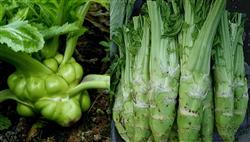
How to fertilize the stem with mustard? Is there anything you need to pay attention to? Ask experienced netizens to introduce the method of stem mustard (mustard) is a good crop for agricultural production in winter, but in production, it is found that once farmers transplant, do not pay attention to late topdressing, it will lead to low yield. Generally speaking, the production is 1000.
2018-07-18 -
Confused spot blight, stem withered, green withered, withered. What does it have to do with all kinds of withering?

Spot blight, leaf blight, stem blight, vine blight, standing blight, green blight, wilt. Seeing so many "blight" diseases, do you feel that your brain has been confused? Moreover, many diseases are similar to each other in terms of symptoms. For example.
2018-05-24 -
How to grow lettuce: When to grow lettuce, lettuce cultivation requirements for the environment
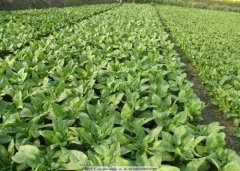
Lactuca sativa L. is a very popular vegetable. The cultivars vary in morphology and color. Common cultivars can be divided into leaf, leaf peeling, leaf standing, wrinkled leaf, bulb and tender stem according to morphology. Leaf lettuce, standing lettuce and wrinkled lettuce are also known as non-bearing lettuce
2019-01-02 lettuce how to cultivate when right environment requirements -
When the flower stem of lettuce expands, it provides sufficient nutrients.
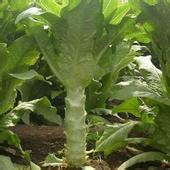
Lettuce Compositae, lettuce, annual or biennial herbs. Lettuce can be divided into two types: leaf and stem. Leaf lettuce is also known as lettuce, stem lettuce is also known as lettuce, asparagus. The flesh of lettuce is tender, and the stem can be eaten raw, salted, fried, dried or pickled. Lettuce mainly eats leaves or leaf balls, and lettuce stems and leaves contain lettuce.
2018-09-15 -
Lushu No. 3

Lushu 3, also known as Yanshu 13, was selected from the progeny of Xushu 18x American red hybrid in 1978 by Yantai Agricultural Science Research Institute of Shandong Province, the original line numbers 79mur555 and 79Mu709. Approved and popularized by Shandong crop Variety approval Committee in 1989. Characteristics: top leaf green, aboveground stems and leaves are green, leaf tip heart-shaped, leaf larger, petiole length 21 cm, stem tip hairy, stem diameter 7 mm; medium vine type, longest vine length 213 cm, basal part
2019-01-15 -
Asparagus and its cultivation points
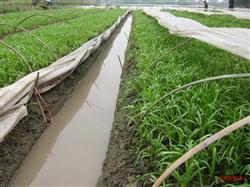
Ipomoea aquatica, also known as Ipomoea aquatica, Ipomoea angustifolia and Ipomoea aquatica, is an annual or perennial vine of the family Spirulaceae. Asparagus is eaten with tender stems and leaves. Asparagus has a long harvest time and is a leaf vegetable growing in summer, which can make up for the market structure of less-leaf vegetables and more fruit vegetables in summer in Liaoning Province. The branching ability of spinach to extract tender shoots from leaf axils.
2018-09-13 -
How to raise the sword leaf dragon blood tree? can it be inserted alive?
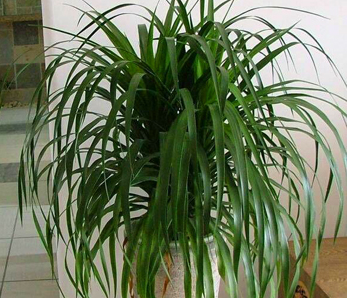
When it comes to this sword-leaf dragon blood tree, it is very good-looking and suitable for viewing leaves. It is so green all the year round. Let's take a look at how to raise the sword-leaf dragon blood tree. Sword leaf dragon blood tree can be inserted alive: how to raise the sword leaf dragon blood tree: 1. Temperature: the most suitable growth temperature for the sword leaf dragon blood tree is 20-28 ℃
2019-01-30 -
Standardized high-yield cultivation techniques of lettuce in spring

Lettuce is the stem with lettuce, its aboveground stem is crisp and tender, delicious, can be fried, cold, soup, pickled and so on, it is a good vegetable for consumers. Lettuce, also known as lettuce, a variety of lettuce in the Compositae family that can form fleshy tender stems, herbaceous plants in 2012.
2020-11-08 Lettuce spring standardization high yield cultivation techniques lettuce that is stem
